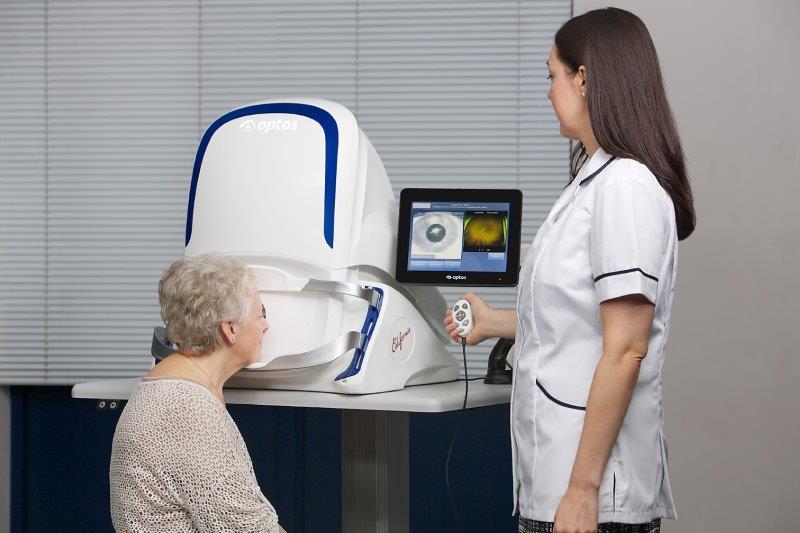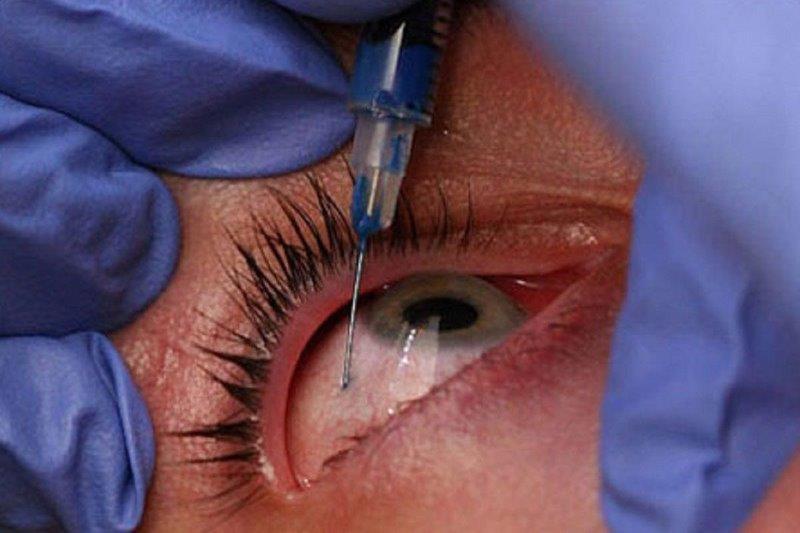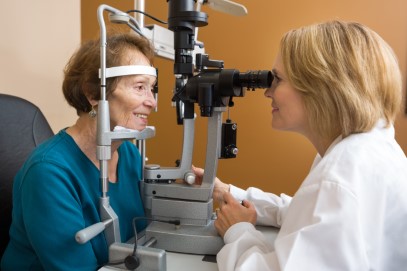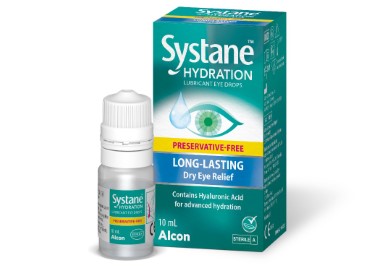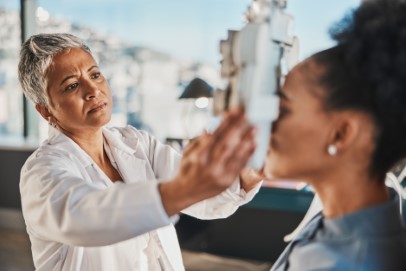Myopia’s moment in the sun
Myopia is one of the most common eye disorders and its prevalence is increasing worldwide, including in Australia and New Zealand. The condition’s refractive error is due to a mismatch between axial length and the optical power of the eye, with axial myopia’s severity directly related to axial length. By 2050, it’s predicted 10% of the global population will have high myopia, defined as a refractive error of ≥-6.0D and axial length of ≥26mm in either eye1.
The biochemical pathways that lead to myopia-inducing eye growth are not fully understood. The current understanding is of a signalling cascade initiated within the retina in response to visual input that leads to changes in the retinal pigment epithelium and choroid. This ultimately results in scleral remodelling and eye growth. Biochemicals implicated in this signaling include dopamine, acetylcholine, insulin, melanopsin, retinoic acid, nitric oxide and γ-aminobutyric acid (GABA).
There is wealth of evidence to suggest that environmental factors play a huge role in the development and progression of myopia. Several studies have shown that increased amounts of time outdoors protect against development, minimising the increased risk associated with near work or having myopic parents2,3. There are a few casual pathways linking time outdoors to myopia; these involve high illuminance, reduced peripheral defocus, chromatic spectrum of light, circadian rhythm and vitamin D.
Light illuminance
Outdoor brightness is typically 10-1,000 times greater than indoor lighting and may link time spent outdoors and myopia4. Rose and colleagues postulated outdoor light might protect from myopia because of increased release of the retinal transmitter dopamine, which is known to reduce eye growth in experimental myopia. The protective effect of bright light has been replicated in animal experiments, including in primates, with UV-free light. This protective effect can be blocked by the dopamine antagonist spiperone, giving substantial support to this hypothesis5,6. However, further interventional studies are needed on whether higher light illuminance independent of spending time outdoors can prevent myopia in humans.
Reduced peripheral defocus
Peripheral objects are minimally defocused when outdoors. In contrast, when indoors, objects are typically nearer, and variation in the dioptric distance of objects is greater.
Chromatic spectrum of light
Shorter wavelengths of light, such as blue, are refracted more than long wavelengths, such as red; thus, red light will be focused posterior to blue light in the eye. Compared with tungsten and fluorescent light sources, sunlight contains more green, blue and ultraviolet lights. The eyes of chicks use such chromatic light cues to regulate eye growth. The different chromatic spectrum of artificial light could cause the retina to incorrectly interpret defocus signals and induce eye growth, thereby linking time spent outdoors and myopia. Although differences in the spectrum of light can potentially alter eye growth, the empirical evidence directly linking chromatic light and myopia onset is still relatively weak.
Circadian rhythm and physical activity
It seems likely that eye growth can be regulated by circadian rhythms, possibly through dopaminergic pathways.
Vitamin D
Both vitamin D and vitamin D receptor polymorphisms have been reported to be associated with myopia. Yazer et al investigated vitamin D levels in a large number of individuals participating in the 20-year follow-up of the Western Australian Pregnancy Cohort (Raine) Study, in which ethnicity, parental myopia and education status were reported. Myopic participants had significantly lower 25(OH)D3 concentrations and myopia prevalence was significantly higher in individuals with vitamin D deficiency compared to individuals with sufficient levels7. This association could be evidence of an underlying biochemical mechanism between serum 25(OH)D3 concentrations and myopia, and explains previous findings that greater time spent outdoors is associated with reduced risk of myopia development7.
So are sunnies a good idea?
Reassuringly, ultraviolet light exposure is likely not required for myopia protection8. In 2019, Lanca et al measured light illuminance levels reaching the eyes with and without sun-protective equipment, across a wide range of outdoor and indoor environments in Singapore. They concluded that exposure to light outdoors was considerably higher than indoors, even while wearing sunglasses, a hat, or being in the shade. The results of this study supported public health efforts to encourage outdoor activities and raise awareness about the importance of sun protection measures to reduce UV damage while increasing protection against myopia onset.
Therefore, clinical recommendations or public health interventions to increase time spent outdoors are likely compatible with skin protection and sunglasses use, which do not significantly reduce the myopia-protective effects of outdoor light intensity9. Further, children should be encouraged to spend more time outdoors, while using sun protection, to prevent myopia.
For more, see www.nzoptics.co.nz/articles/archive/classroom-light-protective-against-myopia
References
- Flitcroft D, He, M, Jonas, J, Jong, M, Naidoo, K, Ohno-Matsui, K, et al. IMI – Defining and classifying myopia: a proposed set of standards for clinical and epidemiologic studies. Invest Ophthalmol Vis Sci. 2019;60(3):M20-M30.
- Rose K, Morgan I, Ip J, et al. Outdoor activity reduces the prevalence of myopia in children. Ophthalmology 2008; 115: 1279–85.
- Jones L, Sinnott L, Mutti D, Mitchell G, Moeschberger M, Zadnik K. Parental history of myopia, sports and outdoor activities, and future myopia. Invest Ophthalmol Vis Sci 2007; 48: 3524–32.
- Wu P, Chen C, Lin K, et al. Myopia prevention and outdoor light intensity in a school-based cluster randomized trial. Ophthalmology 2018;125:1239–50
- Smith E 3rd, Hung L, Huang J. Protective effects of high ambient lighting on the development of form-deprivation myopia in rhesus monkeys. Invest Ophthalmol Vis Sci 2012; 53: 421–28. 44
- Ashby R, Schaeff el F. The effect of bright light on lens compensation in chicks. Invest Ophthalmol Vis Sci 2010; 51: 5247–53.
- Yazar S, Hewitt A, Black L, McKnight C, Mountain J, Sherwin JC, Oddy W, Coroneo M, Lucas R, Mackey D. Myopia is associated with lower vitamin D status in young adults. Invest Ophthalmol Vis Sci. 2014 Jun 26;55(7):4552-9.
- Lingham G, Mackey D, Lucas R, Yazar S. How does spending time outdoors protect against myopia? A review. Br J Ophthalmol. 2020 May;104(5):593-599. Epub 2019 Nov 13. PMID: 31722876.
- Lanca C, Teo A , Vivagandan A, Htoon H, Najjar R, Spiegel D, Pu S, Saw S. The effects of different outdoor environments, sunglasses and hats on light levels: Implications for myopia prevention. Transl Vis Sci Technol. 2019 Jul 18;8(4):7.

Dr Rasha Altaie is a consultant ophthalmologist with specialist knowledge in cornea and anterior segment disease, and an honorary senior lecturer at the University of Auckland, based in Counties Manukau and Milford Eye.














